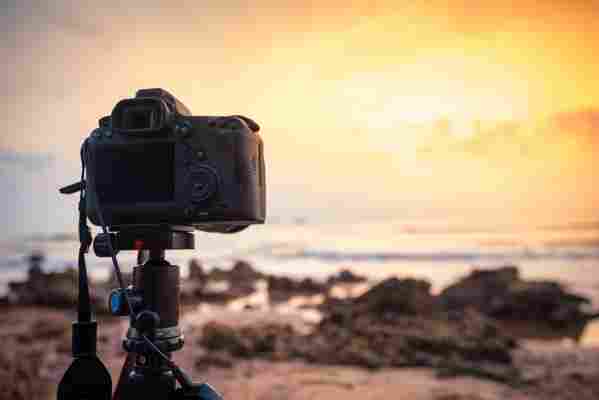Future Camera Technological Advances
The best digital cameras are always changing, adding new features, and improving old ones. Here are some of the most exciting and promising changes coming to digital camera technology in the near future.

01 of 06 Goodbye, Shutter Button Nuttarpon Johnpardunsat / EyeEm / Getty Images Futuristic cameras might not require a shutter button. Instead, photographers could wink or use a voice command to tell the camera to shoot an image. Facebook's Stories smart glasses may inspire digital camera manufacturers. Stories glasses have two front-facing cameras users can control with verbal commands. Nikon has already found a way to get rid of the mechanical shutter, and Canon has filed a patent for an electronic shutter button, so it seems we're well on our way to a shutter buttonless digital camera.
02 of 06 Redefining 'Ultra Compact' Sharon Vos-Arnold / Getty Images An ultra-compact camera usually measures one inch or less in thickness. Such small cameras are convenient because they easily fit in a pants pocket or purse. Future cameras are likely to redefine this category with even smaller dimension models. This prediction makes some sense: The high-tech components inside cameras continue to shrink. So touchscreens might come to determine camera size and eliminate all other controls and buttons, just like they do with smartphones. You can already find a Docooler Digital Camera Mini Pocket Camera and an Ailaah Digital Camera Mini Pocket Camera that are only .7 inches thick. And with the PaperShoot Paper Camera hitting the .5-inch thickness measurement, there's no telling how thin digital cameras can get.
03 of 06 'Smell-graphy' Artur Debat / Getty Images Photography is a visual medium, but future cameras might add a sense of smell to images. Photographs that can stimulate senses other than vision are an interesting idea. For example, a photographer could command the camera to record the smell of the scene, embedding it with the visual image captured. Of course, this would have to be optional because not all aromas are pleasant. There's some work being done on the "smell-graphy" front. The MIT Media Lab outlined what it calls a "Smell Camera," with a pump connected to a smartphone. A user would control the pump to capture smells in a gelatin capsule and then "play" the memory later, complete with smells.
04 of 06 Unlimited Battery Power Yaroslav Mikheev / Getty Images Rechargeable batteries in today's digital cameras are powerful, allowing at least a few hundred photographs per charge, but what if you could charge the camera automatically as you're using it, without plugging it in? The camera of the future could incorporate some sort of solar energy cell, allowing the battery to operate only from solar power or the battery charge it generates. A solar cell might add considerable size to the camera, which would be an acceptable tradeoff for unlimited battery power. Considering that there are already solar-powered video cameras and portable solar chargers, it seems like a solar-powered digital camera won't be far behind.
05 of 06 Light Field Recording Marc Pfitzenreuter / Getty Images Lytro cameras employ light field technology, which could soon become a bigger part of general photography. Light field photography involves recording the photo and determining which portion to focus on later. Since Lytro came out with its light field technology camera in 2012, there hasn't been a rush of followers. However, Google acquired Lytro in 2018 and has since used the technology in its Project Starline, which it calls a "magic window" that allows you to simulate being face-to-face with someone who is not nearby. Also, Apple was granted a light field technology patent in 2021, presumably to add gesture functionality to its iPhone cameras, allowing them to capture wider ranges. With the big tech guns invested in light field technology, there's no telling how it may be used in digital cameras in the future.

Leave a Comment